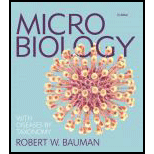
Concept explainers
(a)
To determine:
The similarities and dissimilarities in the following related terms mitosis and meiosis.
Introduction:
Mitotic cell division is a type of division in which two daughter cells are formed each having the same number and same type of chromosome as the original. Meiosis is also a type of cell division that results in the production of four daughter cells with half the number of chromosome
(b)
To determine:
The similarities and dissimilarities in the following related terms chromatids and chromosome.
Introduction:
Both chromatids and chromosome are the structures that carry hereditary information from parental generation to their next generation. Both chromatids and chromosome play important role in cell division.
(c)
To determine:
The similarities and dissimilarities in the following related terms hypha and mycelium.
Introduction:
Hyphae and mycelium both the structure are present in
(d)
To determine:
The similarities and dissimilarities in the following related terms algal body and fungal body.
Introduction:
Algae are a simple eukaryotic organism that possesses chlorophyll that acts as a primary photosynthetic pigment. Fungi are the member of a eukaryotic organism that can digest food from outside and absorbs the nutrients through its cell wall.
(e)
To determine:
The similarities and dissimilarities in the following related terms water mold and slime mold.
Introduction:
Mold is the term that is used to refer to those fungi that are multicellular and have thread-like structures called hyphae
Want to see the full answer?
Check out a sample textbook solution
Chapter 12 Solutions
Microbiology with Diseases by Taxonomy (5th Edition)
- In one paragraph show how atoms and they're structure are related to the structure of dna and proteins. Talk about what atoms are. what they're made of, why chemical bonding is important to DNA?arrow_forwardWhat are the structure and properties of atoms and chemical bonds (especially how they relate to DNA and proteins).arrow_forwardThe Sentinel Cell: Nature’s Answer to Cancer?arrow_forward
- Molecular Biology Question You are working to characterize a novel protein in mice. Analysis shows that high levels of the primary transcript that codes for this protein are found in tissue from the brain, muscle, liver, and pancreas. However, an antibody that recognizes the C-terminal portion of the protein indicates that the protein is present in brain, muscle, and liver, but not in the pancreas. What is the most likely explanation for this result?arrow_forwardMolecular Biology Explain/discuss how “slow stop” and “quick/fast stop” mutants wereused to identify different protein involved in DNA replication in E. coli.arrow_forwardMolecular Biology Question A gene that codes for a protein was removed from a eukaryotic cell and inserted into a prokaryotic cell. Although the gene was successfully transcribed and translated, it produced a different protein than it produced in the eukaryotic cell. What is the most likely explanation?arrow_forward
- Molecular Biology LIST three characteristics of origins of replicationarrow_forwardMolecular Biology Question Please help. Thank you For E coli DNA polymerase III, give the structure and function of the b-clamp sub-complex. Describe how the structure of this sub-complex is important for it’s function.arrow_forwardMolecular Biology LIST three characteristics of DNA Polymerasesarrow_forward
 Biology (MindTap Course List)BiologyISBN:9781337392938Author:Eldra Solomon, Charles Martin, Diana W. Martin, Linda R. BergPublisher:Cengage Learning
Biology (MindTap Course List)BiologyISBN:9781337392938Author:Eldra Solomon, Charles Martin, Diana W. Martin, Linda R. BergPublisher:Cengage Learning Biology Today and Tomorrow without Physiology (Mi...BiologyISBN:9781305117396Author:Cecie Starr, Christine Evers, Lisa StarrPublisher:Cengage Learning
Biology Today and Tomorrow without Physiology (Mi...BiologyISBN:9781305117396Author:Cecie Starr, Christine Evers, Lisa StarrPublisher:Cengage Learning Biology: The Unity and Diversity of Life (MindTap...BiologyISBN:9781305073951Author:Cecie Starr, Ralph Taggart, Christine Evers, Lisa StarrPublisher:Cengage Learning
Biology: The Unity and Diversity of Life (MindTap...BiologyISBN:9781305073951Author:Cecie Starr, Ralph Taggart, Christine Evers, Lisa StarrPublisher:Cengage Learning Biology 2eBiologyISBN:9781947172517Author:Matthew Douglas, Jung Choi, Mary Ann ClarkPublisher:OpenStax
Biology 2eBiologyISBN:9781947172517Author:Matthew Douglas, Jung Choi, Mary Ann ClarkPublisher:OpenStax





